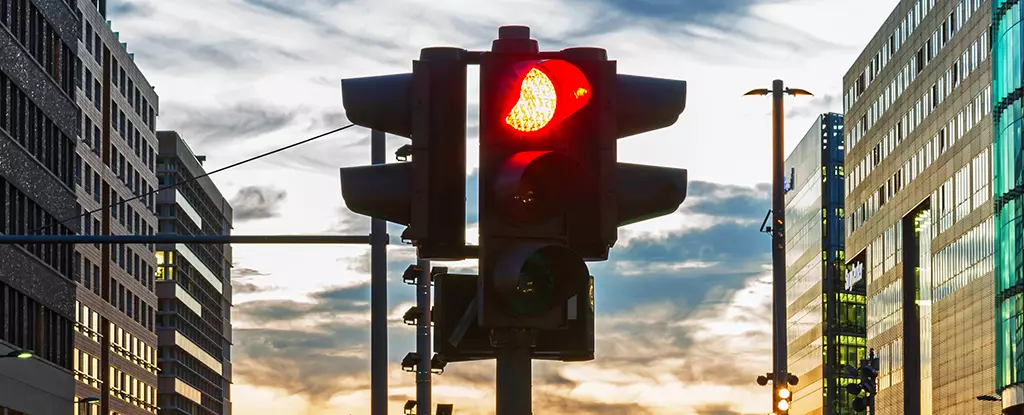Traffic congestion has long been a persistent issue in cities around the world. Slow-moving traffic not only causes frustration among commuters but also results in increased air pollution and fuel consumption. However, recent developments by Google in the realm of artificial intelligence (AI) provide hope for a future with reduced wait times, fuel use, and polluting emissions at intersections. With early indications showcasing a potential reduction in stops by around 30 percent and a 10 percent decrease in emissions, the implications on a global scale are massive. This groundbreaking innovation has the potential to transform the way we interact with traffic, revolutionizing urban mobility as we know it.
A New Approach to Intersection Optimization
Traditionally, city planners have relied on expensive sensors or manual vehicle counts to understand the complexities of traffic flow at intersections. However, Google’s AI-driven solution leverages the vast amount of data gathered from Google Maps to derive actionable insights. By monitoring vehicle routes and speeds, the app can predict traffic patterns and create AI models that capture the interplay between vehicles and traffic lights. The result is a comprehensive optimization system that optimizes traffic flow through intersections without requiring any significant infrastructure upgrades.
At the heart of Google’s intersection optimization efforts lies the powerful data-driven capabilities of Google Maps. With its ability to process a wealth of data quickly and accurately, the application serves as the cornerstone for identifying areas of improvement. By analyzing thousands of intersections simultaneously, Google’s AI-based algorithm can propose changes to traffic light timings and coordinate the synchronization of lights across different intersections. Consequently, vehicles can navigate the city more smoothly, mitigating traffic congestion and reducing travel times for commuters.
Global Impact: Project Green Light
Google’s ambitious initiative, aptly named Project Green Light, is already making waves across the world. Currently live in 12 cities spanning four continents, including Seattle, Rio de Janeiro, Manchester, and Hyderabad, the project aims to expand its reach and make intersections more efficient on a global scale. The cities involved have reported encouraging results within weeks of implementation, demonstrating the effectiveness of Google’s AI-powered recommendations.
Pioneering a Greener Future
Google engineers are not alone in their pursuit of enhancing traffic efficiency and reducing greenhouse gas emissions. Numerous studies have explored innovative solutions such as autonomous vehicles collaborating with traffic lights and prioritizing public transportation options like buses and bicycles. These collective efforts highlight the impact of seemingly minor improvements when considering the sheer volume of daily road journeys. By leveraging technology and data, we can create a greener future and address the pressing challenges associated with urban mobility.
Transport for Greater Manchester in the UK, one of the early adopters of Google’s intersection optimization solution, affirms its effectiveness in driving tangible results. By gaining visibility into areas that were previously unexplored, the initiative enabled engineers to identify opportunities for enhancing signal timings. This valuable insight has the potential to impact a vast network of 2,400 traffic signals, significantly improving the overall efficiency of the city’s transportation infrastructure.
As Google’s AI-driven solution continues to evolve and expand its impact, the potential benefits for cities worldwide become increasingly evident. With the ability to reduce the number of stops by 30 percent and decrease emissions by 10 percent, the advantages of intersection optimization extend beyond alleviating traffic congestion. By leveraging data and AI, cities can enhance the well-being of their residents, preserve the environment, and improve the overall efficiency of transportation systems. Embracing this innovative approach to urban mobility is not just an investment in technology but a commitment to a more sustainable and connected future.
Google’s AI-powered mission to optimize intersections presents a significant leap forward in tackling traffic congestion and reducing emissions. Through the use of Google Maps data and AI algorithms, cities can revolutionize their transportation infrastructure with minimal upgrades. The impact of such optimizations extends far beyond individual intersections, with the potential to transform urban mobility on a global scale. As the world continues to grapple with the challenges of urbanization, Google’s innovative solution serves as a beacon of hope, offering a brighter and more efficient future for commuters and the planet alike.


Leave a Reply